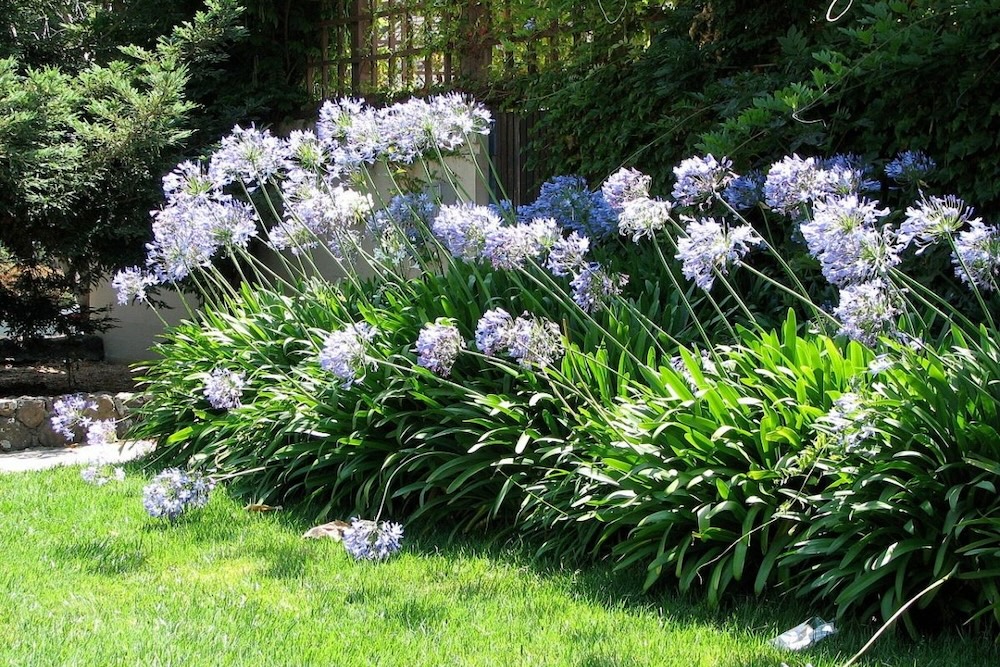Understanding the Art of Agapanthus Care: Vital Actions for Healthy Development and Dynamic Blooms
In the world of gardening, the farming of agapanthus stands as a satisfying endeavor for those that seek to nurture these stylish blooming plants. From picking the best variety to grasping trimming techniques, the trip towards cultivating thriving agapanthus plants is complex and holds the essential to opening the full capacity of these organic gems.

Choosing the Right Agapanthus Range

When choosing the right Agapanthus selection for your yard, take into consideration factors such as climate viability, bloom shade, and development behavior. Agapanthus, generally called Lily of the Nile or African lily, comes in a selection of shades varying from tones of blue and purple to white. Choose a flower color that enhances your existing garden combination to produce an unified landscape. In addition, take into consideration the climate in your region to make sure the Agapanthus variety you choose can grow in your certain conditions. Some ranges are a lot more forgiving of chilly temperature levels, while others like warmer climates. Recognizing the development behavior of various Agapanthus ranges is crucial for correct positioning within your yard. Some ranges have a clumping development habit, ideal for containers or boundaries, while others have an even more spreading nature, appropriate for ground cover or mass growings. By thoroughly evaluating these variables, you can select the excellent Agapanthus range to improve the charm of your garden.
Suitable Growing Conditions
Considering the optimum ecological requirements is necessary for successful Agapanthus farming. Agapanthus flourishes in well-draining dirt with a somewhat acidic to neutral pH degree. When planting, choose a place that gets complete sunlight to partial shade. In hotter environments, offering some afternoon color can avoid scorching of the leaves. Agapanthus plants are delicate to cool temperature levels and need to be protected from frost throughout winter months.
To make certain healthy and balanced growth and vibrant flowers, plant Agapanthus light bulbs at a depth of regarding 2-4 inches and area them 8-12 inches apart. Including raw material, such as compost, to the soil can enhance drainage and fertility, advertising robust origin growth. Mulching around the base of the plants helps maintain moisture and reduces weed development. Normal watering is vital, specifically throughout the growing period, to keep the dirt continually moist but not waterlogged.
Watering and Fertilizing Tips
Maintaining proper dampness degrees and providing essential nutrients are vital aspects in the treatment regimen for Agapanthus plants. When it comes to watering Agapanthus, it is critical to strike a balance. These plants prefer continually damp dirt yet are at risk to root rot if overwatered.
Feeding Agapanthus is necessary for promoting healthy and balanced growth and respected blossoms. Use a balanced fertilizer, such as a 10-10-10 formula, in the very early springtime as new development arises. By following these watering and fertilizing pointers, you can guarantee your Agapanthus plants flourish and generate lively, long-lasting blossoms.
Pruning Techniques for Agapanthus
Pruning Agapanthus plants at the appropriate times and with appropriate methods is crucial for preserving their wellness and promoting optimal growth and flowering. The excellent time to trim Agapanthus remains in late winter or early springtime before brand-new growth emerges. Beginning by removing any kind of yellowing or dead leaves near the base of the plant. Cut them as short as possible without harming the arising shoots.
Deadheading spent flowers can likewise reroute the plant's energy right into generating more blooms rather than setting seeds. If you desire to collect seeds for propagation, leave some flowers to mature and dry on the plant.
Remember to make use of tidy, sharp tools to make exact cuts and minimize the danger of presenting illness. Agapanthus. Routine trimming will certainly help keep your Agapanthus looking cool and healthy while guaranteeing a plentiful screen of stunning flowers
Handling Typical Pests and Diseases
After guaranteeing appropriate pruning techniques for Agapanthus, it is essential to attend to usual parasites and conditions that can affect the wellness and vitality of these plants. Agapanthus plants are normally hardy however can still come down with specific issues. One usual insect that impacts Agapanthus is the Agapanthus gall midge. This tiny, orange fly lays its eggs in the vegetation, leading to altered growth and blossom buds that fall short to open. To battle this More Bonuses pest, trim and destroy any type of afflicted plant components and think about using insecticidal soap.
One more typical issue is fungal fallen leave area, which offers as dark sores on the fallen leaves. To prevent fungal conditions, make certain excellent air blood circulation around the plants, stay clear of above watering, and remove any type of contaminated fallen leaves quickly. In addition, Agapanthus plants can experience root rot if they are planted in poorly draining pipes soil. To avoid this, plant Agapanthus in well-draining soil and stay clear of overwatering. By being attentive and taking timely activity versus illness and parasites, you can aid your Agapanthus plants grow and generate vibrant blooms.

Verdict
Finally, mastering the art of agapanthus treatment entails choosing the ideal selection, offering suitable planting conditions, correct watering and feeding, suitable pruning techniques, and addressing typical insects and diseases. By adhering to these vital steps, you can ensure healthy development and dynamic blossoms for your agapanthus plants. here Remember to routinely monitor and preserve your plants to advertise their overall wellness and long life.
To guarantee healthy development and dynamic flowers, plant Agapanthus light bulbs at a deepness of concerning 2-4 inches and area them 8-12 inches apart. By adhering to these watering and feeding pointers, you can guarantee this link your Agapanthus plants grow and create lively, resilient blossoms.
One common parasite that influences Agapanthus is the Agapanthus gall midget. Furthermore, Agapanthus plants can endure from root rot if they are planted in poorly draining pipes soil. By complying with these necessary steps, you can ensure healthy growth and dynamic flowers for your agapanthus plants.